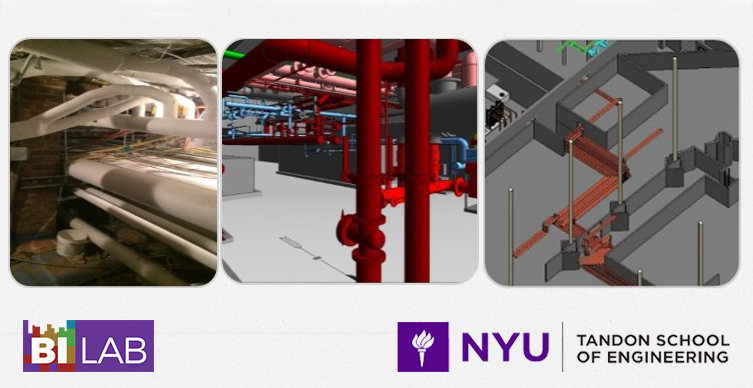 Renovation projects play a critical role in upgrading the existing infrastructure and preservation of historical landmarks. Challenges in the current renovation projects include the lack of up-to-date facility geometric information that reflects the as-is geometric and spatial information and seamless integration of the proposed renovation projects with the existing parts of facilities. Building Information Modelling (BIM) and laser scanning have been the remedies for these challenges within the current practice. However, there are still process improvements required for best practices in the implementation of these two technologies. Challenges in the current practice and process improvements have been analyzed in an iconic landmark building facility analyzed in this study. The initial project included one of the largest gothic style cathedrals in North America and a flagship renovation project on its mechanical system. The research team was involved in the mapping of existing facilities, alignment of the proposed systems with existing systems and overcoming the spatial conflicts in implementing the proposed renovation. This research identifies the challenges the construction teams face as they work on aligning the existing systems with the proposed systems, and the lessons learned from the modelling and laser scanning of legacy facilities during ongoing major renovation.
Renovation projects play a critical role in upgrading the existing infrastructure and preservation of historical landmarks. Challenges in the current renovation projects include the lack of up-to-date facility geometric information that reflects the as-is geometric and spatial information and seamless integration of the proposed renovation projects with the existing parts of facilities. Building Information Modelling (BIM) and laser scanning have been the remedies for these challenges within the current practice. However, there are still process improvements required for best practices in the implementation of these two technologies. Challenges in the current practice and process improvements have been analyzed in an iconic landmark building facility analyzed in this study. The initial project included one of the largest gothic style cathedrals in North America and a flagship renovation project on its mechanical system. The research team was involved in the mapping of existing facilities, alignment of the proposed systems with existing systems and overcoming the spatial conflicts in implementing the proposed renovation. This research identifies the challenges the construction teams face as they work on aligning the existing systems with the proposed systems, and the lessons learned from the modelling and laser scanning of legacy facilities during ongoing major renovation.